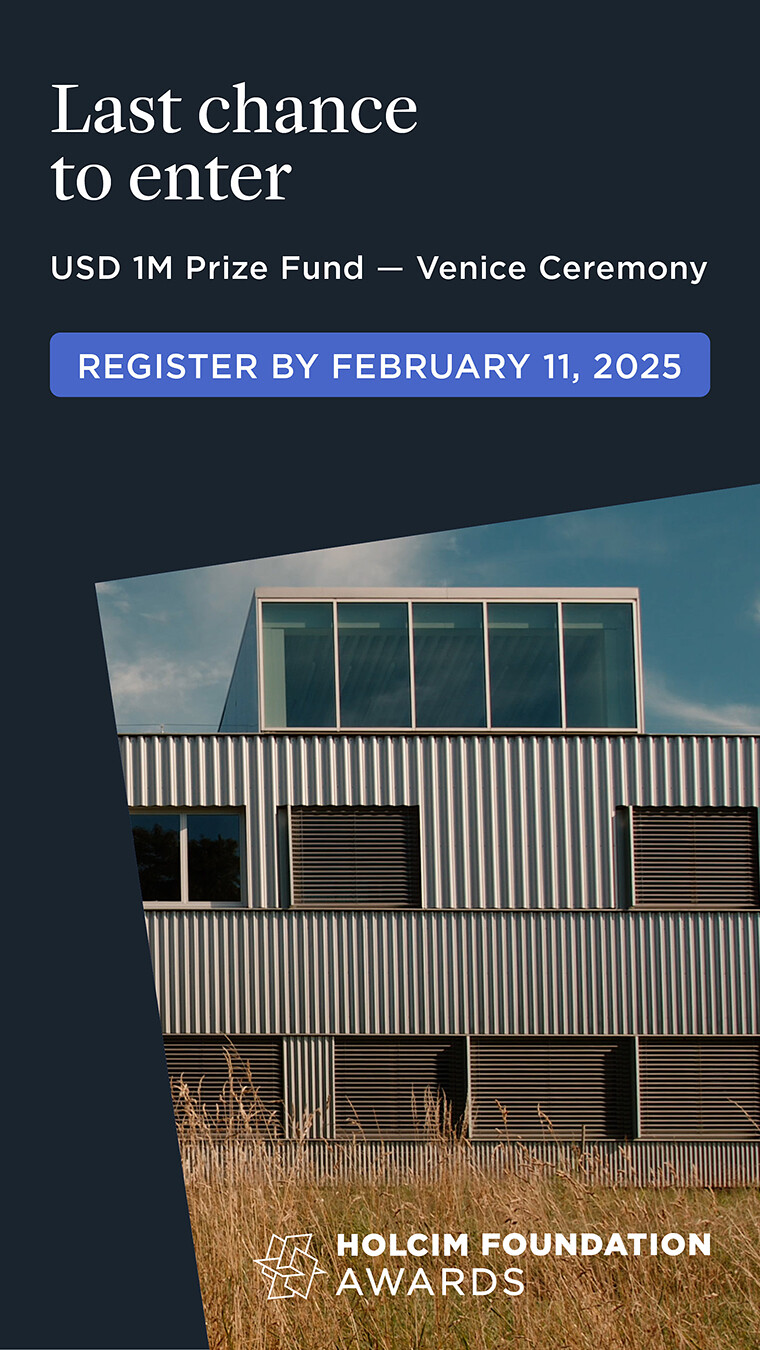Rotterdam, April 2006
I got to know Rem Koolhaas four years ago in Lagos, where we both attended a conference set up as part of Okwui Enwezor’s Documenta 11. In the meantime, I have been living in Beijing for half a year, not far from the construction site of OMA’s biggest building so far, the CCTV headquarters. Back in Europe, I visit Rem in Amsterdam and he shows me a brochure with the title “Dubai Renaissance.” The brochure features an outline of a huge slab rotating in the middle of an artificial lake.
—Ingo Niermann
Rem Koolhaas: This is a top-secret project. It is a competition and maybe very soon it will be released. Or at least we will know whether we have won or not. It is a project for Dubai. It is one of those contemporary conditions that are considered like Singapore almost beyond seriousness. So of course I have tried to make it my mission to take those kind of places and … our architecture is some kind of new simplicity. In Dubai it was very clear that now to do another extravagant building really is just a nightmare and makes no sense. That already defined very clearly what you can do. What we propose is a kind of totally straightforward building. It’s three hundred meters tall, two hundred meters wide, but only twenty-one meters deep. And it’s made entirely out of white concrete. There will be absolutely no facade.
Ingo Niermann: The engine that’s needed to rotate the island …
RK: It’s actually not so big because it rotates so slowly—only once a day.
IN: Where is the sun?
RK: Always on the short side. You never have direct sunlight. Except short moments when it is deliberately out of phase. There is another island—it’s an artificial rainforest and there is a treatment plant for dirty water. Another island is a water garden by Petra Blaisse.
IN: “Renaissance” sounds a bit kinky.
RK: We wanted to call it “The Slab,” but that didn’t seem very plausible. It’s attempting to move away from the purely hysterical and iconic to find a way in which it performs that is not desperate in terms of suggesting movements but which is actually offering the real thing: an actual step in creating buildings that don’t have a predictable code.
IN: The way it rotates—it’s like a showcase. It’s even more iconic.
RK: Who knows. But of course it’s a political building in that sense, yeah. I was in Russia this weekend. I have a friend there who immediately thought of Tatlin.
IN: As the Office for Metropolitan Architecture, don’t you have the ambition to go beyond single buildings and to do city planning?
RK: That is one of the effects of the current situation, that since the public sector has almost disappeared there is almost no city planning. There are mostly projects that are like enclaves.
IN: If you were asked to design a city for 100,000 inhabitants, would you do it?
RK: It totally depends, but it’s not one of my dreams at all. I’m inspired by things and it’s not necessarily my will to create something out of nothing.
IN: The urbanity so many architects are very nostalgic about—wouldn’t it be interesting to find an equivalent for it today?
RK: The work we have done recently, not as architects but as researchers, is exactly to try to define what the modern condition of the city is. To look at the effects of cities that are made at an incredible speed, with very crude assumptions and with often very brutal means. Cities in China that are built so quickly that whenever there is an obstacle, the city goes around it. So I have no problem defining it intellectually, and presumably at some point we would be able to at least work within it. But my problem with most city planning is exactly that it tries to re-create and not to really be based on those new conditions. There is a new situation emerging and it also has very strong qualities and a very strong new form of urban life. I have been able to intellectually kind of absorb it, but it’s much harder to operate in it on the scale of planning.
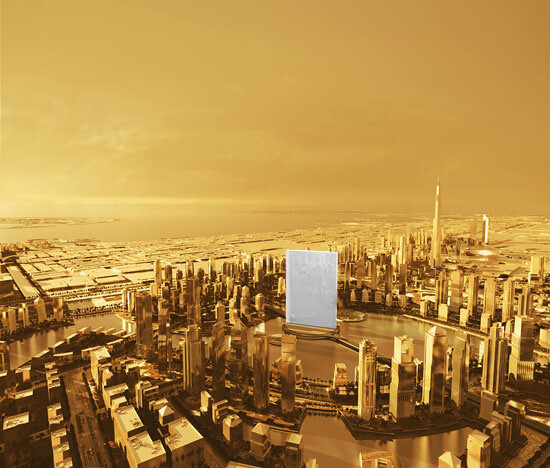

IN: What are the qualities of the new cities?
RK: The most noticeable difference is an incredible freedom to use and abuse the city. It’s much less dependent on rigid rules of behavior.
IN: But aren’t there all these new means to control public life?
RK: Since architecture is so fundamentally nostalgic it has not been able to develop a discourse and an ideology that accepts the real conditions that cities offer now. The architectural profession is stuck, which forces it to almost reject anything that really happens and to design public space in a neurotic and authoritarian way. The other space that architects and thinkers about architecture neglect in terms of not reflecting on it is the political system, which enters the picture with incredible brutality. In England now there is either the neurotic re-creation of public space, or pervasive CCTV cameras and campaigns to remove dirt. The combination of the two creates a totally authoritarian condition.
IN: What should a new public space be like?
RK: There is not a singular answer. If you look at our concert hall in Porto, it’s a building that stands on a completely empty plaza. There you can see that we have so much confidence in public space that we don’t design it. In maintaining neutrality we have eliminated all the designer lamp posts. It is a kind of design-free area. We are also working with the government to avoid gentrifying the surrounding area. In certain conditions I really think it’s at least re-ambiguating the public realm by not having all this tinkering and all this elimination of danger. It’s not a strategy that works in every situation.
IN: In Beijing, city furniture really works. Tools for physical training—the government puts them somewhere in public space and people immediately use them.
RK: That’s the beautiful presence of communism. That is one of the—for me—miracles to see now; whatever you think of communist regimes there is a public generosity and that is why I find Beijing so incredibly beautiful: there is a kind of softness inside all the harshness. There are these vast authoritarian spaces of communism that are actually used in a very human way and are a blatant benefit for citizens.
IN: So after all the Western discussions about wasted urban space, it also has to do with the people and whether they are willing to use the space. And of course with the pressure to use it. When you have no car …
RK: … you have to be in your environment.
IN: And you have a very small flat …
RK: … you have to be outside.
IN: But then maybe the solution is not to be found just within architecture.
RK: The solution is always to accept and to find within the new conditions the new virtues and new qualities.
IN: In contrast to Peter Eisenman and Jeff Kipnis, you have insisted on being not just an architectural but a public intellectual. What does this imply?
RK: I use it with irony, I hope you realize that.
IN: Still, I would love to take it as seriously as possible.
RK: Yes, it’s not a joke.
IN: Why does it have to be ironic?
RK: There is no irony in the ambition, but the irony is knowing that the public domain is not what it used to be. The whole public world is so compromised at this point.
IN: A couple of years ago you said: “The good is not a category that interests me” (Wired, 2000).
RK: You know, I might still become interested in it. I am thinking of going into politics. In the past couple of years we have been governed in such a bad and damaging way. In Holland the whole thing with immigrants, it’s a total nightmare where the government is ruining existing relationships and ruining the whole issue of multiculturalism, mismanaging and actually damaging it. And seeing the same with Europe and how inept one is in terms of what Europe does, where it’s important, and so on, I was provoked, along with a number of other people, to consider it. We explored whether we actually would be welcomed in certain parties. So there is the potential to do it. I’m undecided.
IN: Who’s in this group of people?
RK: It’s a group of friends all wrestling with the same dilemma. One is Stefano Boeri, the editor in chief of Domus. He is going to run for mayor of Milan. Rebecca Gomperts is a Dutch abortion activist. She organized the Women on Waves ship.
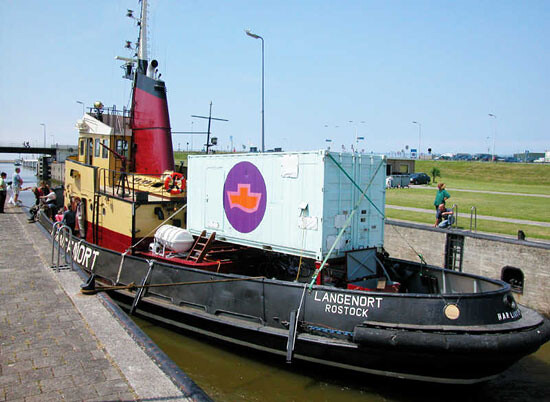

IN: What would you change?
RK: I haven’t really thought about it. It’s just a kind of childish emotion. It would be socialist, I think.
IN: Where does the money come from to finance socialism in a globalized world?
RK: I know all the dilemmas. There is also a vague instinct—I hesitate to call it more than that … This is the beauty of the current situation: you as a writer, with probably very little practice in the economy, ask me the question “How do you pay for socialism?” And you have obviously been brainwashed—and that is the amazing effect of the market economy, that it really suggests to everybody that there is no alternative and that it is a definite state.
IN: I didn’t say that you can’t. I’m just asking how.
RK: When there was a socialist government in the Netherlands, you could get a doctor to come to your home, you could go to good schools, the universities were better, the railroads were working. During communism the Siberian tiger was protected, but after the market economy people in Vladivostok became so poor they had to eat it. So I think it’s partly a very strong indoctrination that the market economy is the only system. There will probably never be a return to that kind of socialism, but the ineffectiveness and malfunctioning of the market economy in certain very important areas is so manifest that you can no longer claim that it is the final state. It’s inexplicable that we are very rich now but cannot afford things that we could afford when we were poor. There must be a reason behind that paradox; one of the reasons must be that people partly get richer and partly get poorer.
IN: There is another paradox: in Singapore, Dubai, and China there is massive privatization and economical liberalization, but at the same time there is a strong, almost fascist state.
RK: That a strong state and a total liberalization are incompatible turns out not to be true. And at the same time, in the West liberty is undermined in all kinds of ways. It’s in that sense a beautiful moment when there are such inconsistencies everywhere and none of them makes sense. All the formulas that were simple and simplistic have led to results that are very exotic and unpredicted.


IN: It has been a dominant idea that largely privatized cities would turn out to look like the city in the film Blade Runner: no functioning subway, no functioning government—all eroded. What’s left is corruption and anarchy.
RK: I agree with you that the outcome is not anarchy, but rather to an amazing extent a kind of voluntary authoritarianism. By creating so much phobia about security, people have voluntarily abandoned any sense of their own privacy.
IN: Some years ago you claimed that all big cities in the world could turn into a city like Lagos—like a Moloch. But looking at Africa, for me I don’t so much see the future …
RK: … but the past.
IN: Or something you become at least very nostalgic about.
RK: Very authentic, absolutely, and really urban. That is the switch I had to make when it came to Lagos. Because I now see Lagos as a last attempt at organizing things in a classical manner. The way I’m now working on Lagos is to describe how an entirely modernistic concept, simply through its decay and its dysfunctionality, enabled a vast amount of unpredictable and unpredicted behavior that is actually creating possibilities in the city that were never considered before, but that enable people to survive. So it’s a very meticulous description of, for instance, how the simple fact that highway columns don’t disappear straight into the water but have little platforms enabled thieves to work on the platforms as their mates ran cars off the road. It’s looking in incredible detail at the many improvisations that infrastructures allow.
IN: I’m wondering about the inefficiency of megacities: the traffic, the pollution. A city like Beijing is the intellectual center for more than a billion people, and then there are days when the inhabitants can’t think properly because of heavy smog. Can you imagine megacities coming to an end?
RK: I don’t think so. In the end, thinking and power are still about bodies. Of course there is the Microsoft campus, but that is in a way almost like a concentration camp. It’s barracks. So it’s also a fairly rigid accumulation of people.
IN: They don’t have any interest in symbolic architecture at all.
RK: They claim not to. And that might actually show a very smart awareness of global empire—any choice they make could turn against them. And they are utterly un-visual. Utterly, profoundly, completely un-visual.
IN: They don’t need symbolic architecture?
RK: Or they have symbolic architecture: neutrality, without pretension.
IN: Maybe that’s why the visible Western world is so rigid and boring: it’s all happening on the internet.
RK: Where you can have your life? It’s totally interesting to see that.
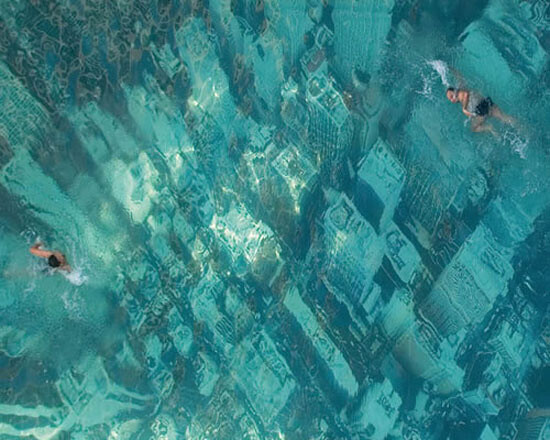

Cagliari (Sardinia), June 2007
Cagliari, the capital of Sardinia, has its first international congress on architecture. Between the harbor and a rotten satellite town famous for drug trading, Zaha Hadid is supposed to build a shiny white museum in the shape of a futuristic wing. Rem Koolhaas still prefers angular forms. As we cross the street, he stops at a bright-blue Lancia from the “folded paper era” and says: “One of the most beautiful cars ever.” Thirty years after the publication of his book Delirious New York he is about to build his own grid-based city: a two-kilometer-long square in the Arabian desert.
IN: You are working on your biggest project so far: Gateway Development, a settlement for 150,000 to 200,000 people in the Arab emirate Ras al-Khaimah.
RK: It’s been doubled actually. In the last couple of weeks they decided they want two of them. And there is a possibility that the Chinese will buy one of them, so that will become a kind of Chinatown.
IN: Who are “the Chinese”?
RK: The Chinese government is buying it as a base in the Middle East.
IN: What will all these Chinese do in this relatively poor and remote emirate with only 250,000 inhabitants?
RK: Dubai is organizing an effort where, for the first time, they want somebody to look at the whole of Dubai and create an interpretation of what is there and propose a strategy to build a kind of definitive Dubai. They realize that they are running out of space. This means that in a way the same thing is happening in the Emirates as in the Pearl River Delta—in Hong Kong, Shenzhen, Guangzhou, Zhuhai, Macau. Basically each of them is defining themselves in terms of all the others. That is also going to happen here, with the Arab Emirates. And so Ras al-Khaimah will always be slightly cheaper, slightly rougher, slightly more utilitarian, and that’s why it’s a proper choice for the Chinese. More and more Chinese contractors are going to work in the Emirates. It’s like a Chinese camp.
IN: That would be a rather comfortable workers camp.
RK: The condition of the worker [in the Emirates] is slightly improving all the time. There is an idea that rather than define new laws, the laws for what workers need would be three-dimensional. So that instead of saying workers need beds of two meters by one meter, they create a three-dimensional existenzminimum that is prefabricated. So that every worker gets his own cell.
IN: What about the first of the two Gateway Developments—will the foreign workers live within the settlement or outside?
RK: There is cheap housing within it. Sixty percent will be cheap housing.
IN: Not just for the Emiratis, but also for Pakistanis and Indians?
RK: Also for Western people. For everyone who is not rich.
IN: How strictly do they have to follow your masterplan?
RK: The plots will be relatively controlled and the height of the buildings will probably be varied.
IN: Each development has a fixed rectangular shape and is supposed not to grow.
RK: That’s been an idea for a long time. Philip Johnson did a city that couldn’t grow. I think it’s clear that it resonates much better with a general concept of what a city is.
IN: And in between these settlements will be nothing but desert?
RK: In between there will be some things that are shared. Public entities, the urban elements. A stadium. There could be a convention center, museums. We have convinced them to maintain the desert not as something that is nothing but as a feature. It doesn’t have to be green.
IN: The rectangular shape of the settlements isn’t fixed by walls. They are not gated.
RK: No, it’s just dense.
IN: The wind will carry the sand into the streets.
RK: It will, but the density also protects against it. [Koolhaas draws a maze-like pattern.] So we are designing very complex textures in order to, on the one hand, maintain the sand, and on the other hand, avoid becoming the victim of it. What is also beautiful about the desert is that in certain areas there is a height difference of more than fifty meters. Those lines are going to be part of the public space.
IN: There will be little lakes as well.
RK: Not a lot. We are trying to do a miniaturization.
IN: Foster & Partners just developed a masterplan for a walled and car-free settlement in Abu Dhabi that will be surrounded by agricultural plantations, and solar and wind farms to make it self-sustaining.
RK: Rather they make it a slogan, while we are working on achieving some of the same results. There are facilities planned for wind and solar farms because in Ras al-Khaimah they don’t even have enough energy for their current inhabitants.
IN: While the West is still criticizing the Emirates for their high energy consumption …
RK: The exciting thing is that in the Emirates they are already taking the next step. So it’s like the whole history of the stupidity of the West compressed into five years.
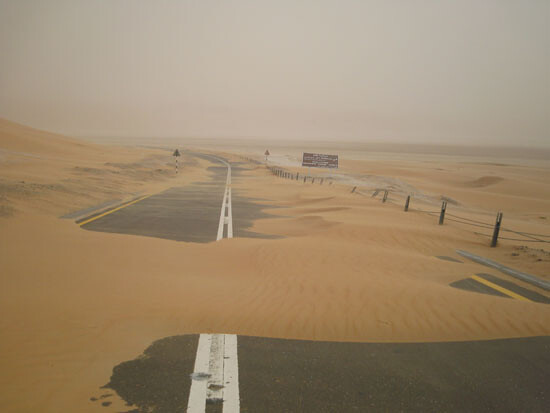

IN: For making all this progress in such a short time, nondemocratic regimes might have an advantage. Industrialization and urbanization in Europe in the late nineteenth century wasn’t implemented by very democratic governments either.
RK: It’s an interesting idea to say that it’s basically a phase they are going through. But that’s not what I believe. On the contrary, I feel that the attitude of America and Israel is contributing to a situation where basically everyone who is not democratic no longer has to pretend that they are on their way to that ideal situation. They can point out: you abuse people and torture people, so don’t bother us. There is going to be a unified nondemocratic constellation between Russia, the Arab world, and China. That will be the new consensus.
IN: Almost all countries that are growing rapidly are nondemocratic.
RK: So they can all develop the same argument: you are unhappy about it, but you depend on us to be authoritarian to survive. It’s very sinister. If you see it happening, and if you see how we promote it and America accelerates it—it’s really a nightmare scenario because there will be very little space for anything else.
IN: Does this development weaken Western democracies as well?
RK: Completely. And I think it will happen within five years.
IN: The democracies will destroy themselves?
RK: I don’t know. I don’t want to speculate about it. I think it will be a very vulnerable situation until there is perhaps a new rhetorical energy. Of course I can always imagine that an extremely intelligent nation like Russia will have the genius at some point to reinvent itself.
IN: In Gulf Survey you write: “We have to negotiate what human rights means, what copyright means, and what democracy means.” Does that mean we have to downgrade them?
RK: No, but we need to look at them in a creative way. Chinese newspapers talk about the number of people who are in American jails. It’s important not to say: well, they do it too. The problem is, all these issues have been abused for political purposes. I think we have to remove the politics from them, which is of course very difficult. I remember when my mother paid five euros every month to Amnesty International—it was a totally understandable, sympathetic gesture. But now you realize that the world is not simple anymore. In the Nineties there was this incredibly stupid idea that the market economy would trigger democracy. And the only thing we have seen is the incredible unreasonable mess of the market economy. So the announced second installment never happened. Bush is just an ornamentation on that crisis. We thought the two things were inevitably connected, but they are no longer connected. The benefits of the first didn’t materialize, so the virtue of the second lost credibility.
IN: Is a populist like Berlusconi just the beginning of what could happen to Western countries?
RK: It’s certainly a very plausible story. And even Tony Blair—I think Tony Blair is very similar to Berlusconi. They were friends.
IN: And Gerhard Schröder …
RK: But Gerhard Schröder had this incredible ability to remain a mensch and also be probably more openly attracted to danger. That he actually started working for Gazprom is really a diabolical stroke.
IN: Last year you took part in the competition for the Gazprom headquarters.
RK: At that point I was really seduced by the idea of working on all the hardest and most questionable things. Maybe it was a self-euphoria or a narcisism to believe that in any case we would be able to come out on the good side.
IN: You could argue that in China there is a general tendency towards the better. In Russia it seems to be just the opposite. Did you hope your skyscraper as an icon would help to reverse this development?
RK: It was slightly more careful. It wasn’t a simple icon. It was actually a really working place. That of course is one way you can interpret competitions: seeing how far you can serve your values. And if they like it, it works. And if they don’t like it, you are not even in the ambiguous situation where you have to exercise somebody else’s values. But it is not necessarily something I would do again.
IN: Herzog & de Meuron, Daniel Libeskind, Jean Nouvel—they all took part in the Gazprom competition. But you are more exposed to moral criticism than any other architect.
RK: I actually sometimes think I’m the only one.
IN: It is because of your writing?
RK: Yes, I guess so. It obviously leads to additional expectations. I know I could probably be more careful or more opportunistic or more diplomatic, but it’s of course also a very exciting field to provoke and torture other people. It’s not a very noble thing but it’s a total allergy for moralism.
IN: In Gulf Survey you claim that “Eventually, the Gulf will reinvent … the coexistence of many cultures in a new authenticity rather than a Western Modernist default.”
RK: What explains the ability of Dubai to live with 80 percent foreigners is that none of them intended or are even allowed to stay. That not everyone will be there forever is actually a really refreshing idea that I think could also unblock the situation in Europe in a drastic way. If you look at the countryside of Switzerland, where basically no one lives anymore—this idea of provisional inhabitation is going to be a much more practical story than multiculturalism.
IN: Germany actually had the concept of the Gastarbeiter [guest worker].
RK: Holland, too.
IN: But most of them just stayed.
RK: Because we could not imagine that the most happy state for anyone was not being European. I think they stayed because in the end it became the expected thing. And of course they made an incredible contribution. I’m really happy they stayed. But from now on, questioning the idea that anyone who comes stays is very liberating.
IN: In Dubai they simply leave because they don’t earn enough money, and are not allowed to bring their families.
RK: It’s not so much about not offering the services. It is very unlikely that the economic situation stays the same, that the advantages stay the same. And therefore it’s also very unlikely that you would want to stay. Staying as a form of irresponsible and very old-fashioned loyalty.
IN: But it makes Dubai very vulnerable as well. Especially since Dubai depends highly on both foreign workers and foreign tourists.
RK: Yes, incredibly vulnerable. But I think they know that. That’s why they also know that they cannot assume that what is attractive one year will still be attractive in four years. And that’s what they do in China too: they use the law as a design tool.
IN: That’s absolute capitalism: pay for your rights. If you want to have freedom of speech …
RK: … pay more.
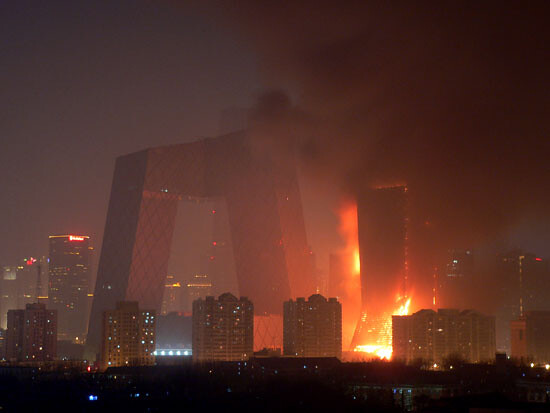

Beijing, February 2008
Saturday afternoon in the China World Hotel. The lobby is filled with well-off Chinese families. The partners of OMA are meeting at a muggy conference room on the second floor. The shell construction of the CCTV headquarters has just been finished.
IN: What is happening with Gateway Development?
RK: We are seeing them in two weeks. They have been setting up an organization and basically defining things over the past six months. Do you know that we are working on the Dubai Waterfront? So in Dubai my mission is in a way very classical and not very polemic. My mission there is to see whether you can build serious and productive urban substance.
IN: How do you want to create it?
RK: It has all the things Dubai doesn’t have: public transport, infrastructure … So it’s really more a statement about what a city can be now.
IN: Is it also based on a grid of streets?
RK: That it kind of boring but I simply don’t have the imagination for anything else. We are looking at the proportion between generic buildings and iconic buildings. Rather than simply dumping them everywhere, we are looking at what the role of iconic buildings could be and whether there is such a thing as plausible icons. The Kremlin has all these towers, and basically in the Thirties and Forties the idea was to project each of these towers outward. So all these fantastic skyscrapers in Moscow are basically colossal enlargements of the Kremlin, which I think is an unbelievably beautiful idea. That is for me a plausible way of using icons: to enlarge the conceptual territory and create a relationship with history—without being light history, but really a next itineration.
IN: You are planning to put Dubai Renaissance there?
RK: Yeah, but Renaissance would be the non-icon.
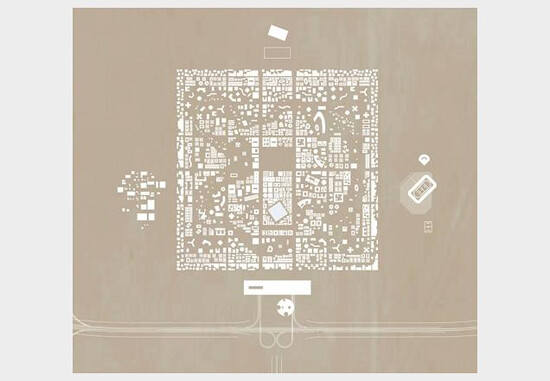

IN: Then what would a real icon be like?
RK: There is now a special icon team in the office. One guy does it. So over the past year we produced 355 or so possible icons. The things for which you feel the greatest aversion are also potentially the things you investigate, as I’ve done many times. So we went from simply “being against” to trying to find plausible ways of doing. We are now producing both sides of the polarity.
IN: Last year you announced a plan to set up a “generics office.”
RK: The idea in its pure form is to investigate whether an architecture with less emphasis on innovation and reinvention, and particularly less emphasis on individuality and uniqueness, is plausible again today. There is a strange phenomenon in which heritage and preservation are expanding to more and more territories now, with one big exception: all the architecture of the Sixties and Seventies and Eighties, all the architecture that is based on regular slap towers—everyone all over the world is united in wanting this architecture to disappear. And so I’m trying to find out whether we can reinvent the plausibility of some of that thinking. Not quite standardization—standardization cannot work anymore today.
IN: But you want to put some order into it.
RK: We have to develop different languages, so it’s also a matter of semantics. That is what I really like, what I think has always been one of the unrecognized dimensions of our work—a genuine interest in semantics and their manipulation.
IN: What makes an icon a good icon?
RK: Icons are buildings that don’t require any intelligence. They’re simply based on a kind of doodle. So what we are trying to make are icons that try to find intelligent ways to state the current situation. For instance, every building on the Dubai Waterfront is based on a thirty-by-thirty-meter floor plan. So one of the icons is almost a kilometer, and then we wove it into a very complex knot where every part supports every other part. It’s the most generic way you can make it an icon, by weaving it in a particular way.
IN: Today the approach is that every office building should be unique, like haute couture. You don’t have any prêt-à-porter.
RK: Or uniforms. So our generics office is really trying to make that plausible again. Because if we can make it plausible again, then we can also reintroduce the contrast. Because it’s horrible, this uniqueness of everything.
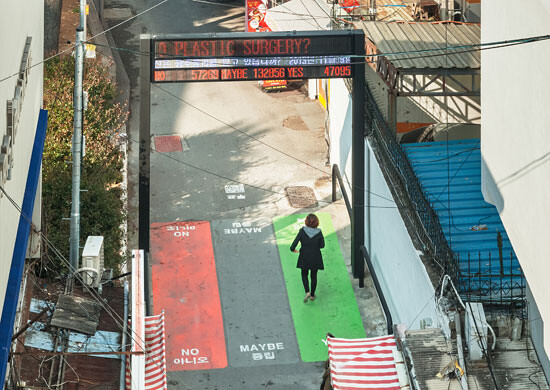

Gwangju, November 2013
In autumn 2010, Rem and I decided to write a book on how Western society is stuck in humanistic rhetoric. Rem proposed that we should try to interview Hu Jintao, Muammar Gaddafi, and Bashar al-Assad. OMA had recently worked on general concepts for tourism in the Libyan desert and for a museum in Damascus. A month later, the Arab Spring started, and instead of writing a book we thought about how public space in existing democracies could be relived in a persistent way. For the second Folly project at the Gwangju Biennale, curated by Nikolaus Hirsch, we ended up building an automatic ballot machine: Vote. Since it is situated in the middle of a shopping district that is mainly populated by teenagers, we asked a local youth organization to come up with a controversial new question every other week. As part of the opening of the Folly project, we once again discuss the current state of democracy.
IN: Is Western democracy in a general crisis?
RK: I think there is a kind of worldwide lack of performance. There is currently not a single political system that seems to be impeccably prepared. That may be partly because they are so interrelated. Therefore, all of them share a sense of crisis. This is a global moment that is so complex that basically the populations of all countries are in a state of confusion. And political leaders are not strong enough to be able to explain or interpret or guide or find ways to get out of it.
IN: Why?
RK: In 1989 and in the early Nineties there was an optimism that liberalism would be a kind of global phenomenon, and that basically the entire world was beginning to evolve in the direction of liberal democracy. We now know that this is not the case at all. Since 2008, the highly performing and successful economic system that seemed to be the guarantor of liberal democracy also doesn’t seem to work. So there are two disappointments, and the interaction between those two creates a very complex situation.
IN: When the Berlin Wall came down, it was mainly due to an economic crisis in the East. This is the question no one ever raised: If you could choose between living in a rich dictatorship and living in a poor democracy, which would you choose? And now there is also the growing value of security.
RK: I don’t see it as simply a decision between democracy and dictatorship, because dictatorships are adjusting themselves and democracy is also evolving. When you say “security” you probably mean the incredible collection of data that, on the one hand, promises security, but on the other hand, also seems to erode democratic rights—more than anything, the right to privacy. Since everyone is wrestling with the same issues, even though the systems are still different, structures are in many ways becoming similar.
IN: I said “dictatorship” but of course that is another challenge for Western democracy—there are much smarter ways of ruling in an authoritarian way.
RK: The West has been so incredibly dogmatic in its reading of the other side and so incredibly uncurious in terms of understanding features and probably also the qualities or the reality of the other side that for a long time they have had a false sense of security or superiority. It is maybe not so much a crisis of democracy but really the collapse of a sense of superiority for which there are many, many indicators. And that is really scary for many of us.
IN: On the one hand you could say that with the conglomeration of states and economies, the world is getting more and more integrated—leading to a world government at some point …
RK: I do not think so. I do not think it’s in anyone’s interest. What is in everybody’s interest is finding ways for very different entities to coexist, and building mutual respect for what the important issues are in those entities. Many different political systems are evolving in their own way and on their own timeline. Applying one template to all of them does not really work.
IN: My second scenario would have been to keep borders, to keep a sense of isolation so that states have the chance to evolve differently. Nowadays, differences are perceived more as something that is like a heritage, a burden that you have to deal with, but in the long run it will all come together.
RK: I think the situation is more exciting than that, because we have had that friction for the last twenty-five years. That friction is ending. I think all people with imagination have to develop a new ideal where there is connection on the one hand, and autonomy on the other.
IN: But do you have an idea of how democracy could work differently than the Western representative model?
RK: Well, there have been times when it worked, but they were times when the choices and the situation were much clearer than they are now. What makes the situation now so incredibly complex is that we have very serious differences between different political systems, but actually in terms of wealth, everyday life, connectedness, access to information, and so forth, all the systems are actually very similar. It is extremely complex now to actually know what our real differences are. It is even more difficult to imagine what the oppositions or the legitimate issues really are.
IN: Are you familiar with the Seasteading Institute? They have this idea of building new states offshore. They say: okay, we need a new frontier; if we really want to try new forms of government, we need new space, and this can only be out in the sea. So they want to build artificial islands. They imagine a situation where you don’t just choose between different parties, but between different forms of governance. It up to you if you want to live in a democracy or a dictatorship, or if you want to live in a corporation. They dream of libertarian states such as Appletopia or Statebook—a state that works similarly to Facebook. It sounds like irony, like sarcasm, but they are very serious about it. I like their idea that if you guarantee people the right to move—and of course, they will also need the material means to be able to move—then you have a totally new freedom. Of course, the elite today already experience this kind of freedom. They can decide where they want to live, whether London, Moscow, or Beijing. They can even live on a yacht and just travel all of the time. So the utopia is to imagine this for everyone on Earth.
RK: I don’t know. For me, this state of being on a yacht for everybody sounds a little bit doof. I think there is one thing that is exciting about this moment: almost all visions, all ideological descriptions, all models are exhausted at the same time. Personally, I do not think that some kind of Apple or Facebook utopia is going to help. I think that the “Facebook generation” may actually hinder the development of new narratives, simply because they are so content to live in virtual space. Again, I am not sure. But I think we’re in a moment where new kinds of imagination need to be mobilized.
